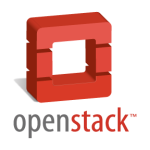Deploy project tenant in OpenStack using Heat orchestration stack

Heat is an OpenStack Orchestration service, which implements an orchestration engine to launch multiple composite cloud applications based on templates in the form of text files that can be treated like code. Heat service is able to read YAML (.yaml, .yml) files and perform different tasks inside OpenStack environment included in YAML components. Using Heat Orchestration we can create instances, networks or even whole tenants with just single mouse click in OpenStack dashboard (Horizon), if we have previously prepared YAML file with Heat instructions to be performed in OpenStack cloud.
In this tutorial we will create example .yaml file for Heat orchestration containing instructions and components needed to deploy project tenant in OpenStack and launch instances inside the tenant. Next, we will create our stack on single OpenStack all-in-one node based on CentOS 7.3 operating system.
Read More
